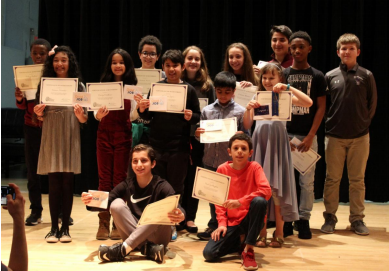Middle and Elementary School Students Explore Science In Research Fair
Middle and Elementary School Students Explore Science In Research Fair
The lobby of the New Rochelle Public Library was filled with the fruits of scientific research from
middle school and elementary school students last Saturday.
Students in the first annual New Rochelle Research Fair presented their explorations of sound, vision,
autism’s challenges and the trajectories of golf balls, among other topics.
“It is genuinely amazing that they all reached this point,” said Jeff Wuebber, director of the New
Rochelle High School Science Research Program, who emceed the fair. “A lot of college students
have not presented original research. This is a very impressive group of students.”
The fair was organized by the Foundation for Science Research in New Rochelle. The New Rochelle
Fund for Educational Excellence contributed support, and the library hosted the event in the lobby as
well as the Ossie Davis Theater.
ALMS seventh grader Elena Adams studied the challenges faced by people on the autism spectrum,
finding, for instance, that they can be both hypersensitive and hyposensitive.
“It really helped me to understand them a little better,” said Adams, who came in first place in the
middle school division. Seventh grader Juliette Thomas came in second while eighth grader James
Palermo came in third. Among the elementary school students, Lia Seelenfreund of Daniel Webster
Magnet School came in first. NRHS students in the Science Research Program volunteered as
judges for the contest.
In addition to the science, the students discovered the importance of verifying their information.
“You have to go to a lot of sources to make sure that what you give as facts are actually facts,” said
Kareem Nasr, an ALMS seventh grader whose research looked at the connection between sunlight
and prevention of myopic vision (nearsightedness).
Already, the lessons they learned have been invaluable. Thomas, the second-place winner,
interviewed 40 students, grades 4 through 7, to determine the age at which they understand Piaget’s
Theory of Conservation. She found that older students understood, for instance, that the volume of
water does not change when poured from one container to another of a different shape.
Beyond that, the project taught Thomas perhaps the most fundamental lesson of all.
“I’ve discovered that there is always more you can learn,” she said.

